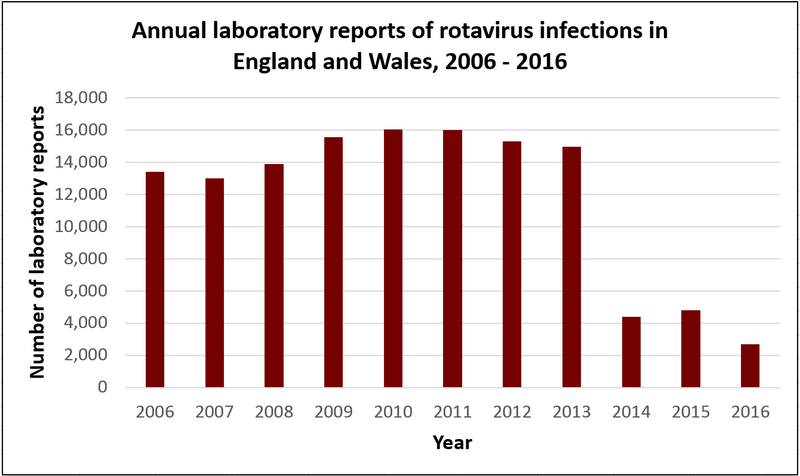|
Rotavirus is a viral infection that commonly leads to severe diarrhoea and vomiting in young children. Before a vaccine was introduced, it affected almost every child in the world by the age of five and around 12,700 children a year were admitted to hospital. It is highly infectious and can cause death through severe dehydration. However, in the UK, where there is good medical care, very few children have died from rotavirus infection. In the developing world, children are much more at risk. The World Health Organization estimated that rotavirus infections caused between 475,000 and 580,000 deaths worldwide in 2004 before vaccines were developed, mainly in developing countries. The virus is generally spread from one person to another through the contamination of hands and surfaces with faeces (poo). |




